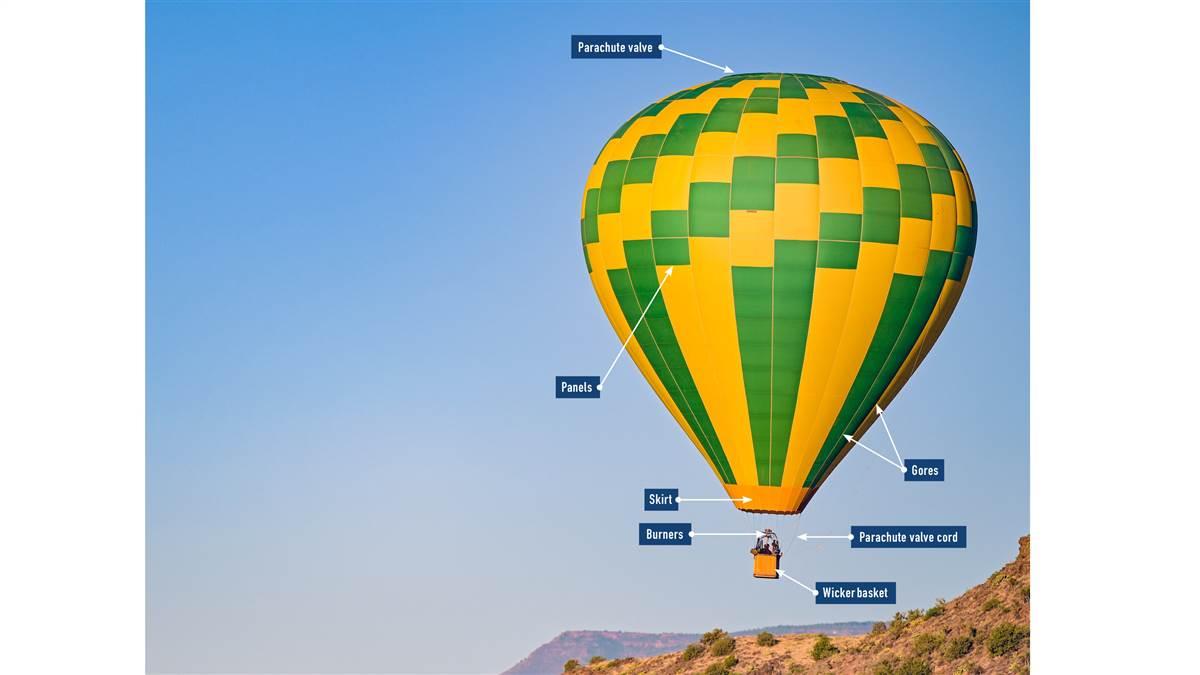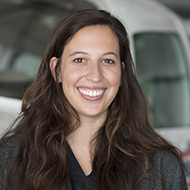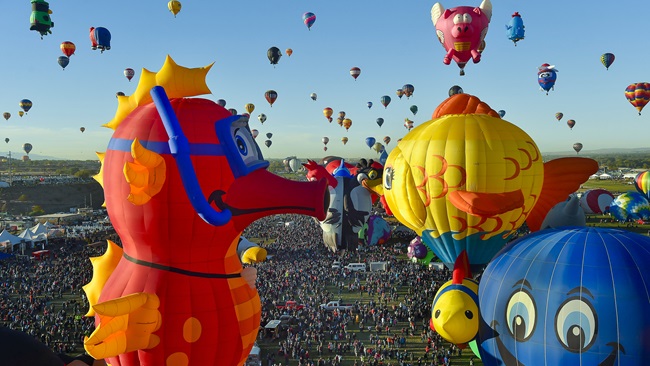The aeronauts
Hot air ballooning in Sedona, Arizona
The only sound is the occasional hiss of the fuel and the resulting whoosh of the flame in our hot air balloon, flown by our expert pilot—officially called an aeronaut—Blair Preston of Northern Light Balloon Expeditions. “The key is in the timing,” he says, as each addition of power anticipates a delay. He’s perfectly contouring us above the Earth, and we fly mere feet above the treetops. Instead of feeling fragile, we feel solid; instead of feeling moved by the wind’s will, Preston is in control. For a first-ever hot air balloon flight, this is going to be hard to beat.
Our hot air balloon journey started early in the morning. While you can control balloons, calm weather is a necessity, which means flying only at sunup in the high desert. Pickup is 4 a.m. We arrived in Sedona the day before, staying at the Sky Ranch Lodge that is just a four-minute walk (we timed it) from Mesa Grill, the airport restaurant, and a few more minutes from the FBO.
In front of the lobby we wait, wearing the recommended gear—hats, layers, and closed-toed shoes. We’ve been warned that while it is unlikely, a balloon may land in a place that requires a hike afterward, thus the closed-toed shoes. The hat is there to dampen the heat from the burner, and is especially recommended for tall passengers. From the otherwise still morning we hear a creaking of wheels. Our van arrives, and behind it is the wicker balloon basket on a trailer. Wicker remains the chosen material for baskets despite experiments throughout ballooning’s history with other options. Wicker is flexible enough to cope with takeoff, landing, or brief encounters with foliage, while light enough to suit balloons.
Our driver is also our pilot, and Preston looks like a guy who could fight a grizzly bear, win, and then tell the world’s best story about it. We drive down the hill from the airport mesa and meet up with our fellow passengers and other balloon pilots in a parking lot. Fresh newlyweds hop into our van, excited for their first hot air balloon ride as well. They were married just four days ago, and as we drive out of the parking lot and exchange hellos, the bride lets us know that she has just officially changed her name on Facebook. Northern Light Balloon Expeditions is one of two operators allowed to fly from within the national forest, so after we head south for a few miles, we leave the pavement behind and bounce down an outback-esque red dirt road, eyes peeled for coyotes and road runners.
After just a few minutes of driving off-pavement, the basket wobbling along behind us, we make it to the launch site—a mostly flat clearing surrounded by cacti and creosote. Four balloons will fly today, and the crews carefully remove the baskets from their trailers, tip the baskets onto their sides, and lay the balloons out downwind. Each balloon has a chase car that the basket was carted in on—they will carefully follow our route on the flight to make sure they’re close to where we land, and ideally, right where we land to help with touchdown. To someone used to the reassuring solidity of an airplane, the fabric and wicker look mighty fragile.
The crew asks for volunteers to help inflate the balloon envelope; for ours, the newlyweds step up and give it a go. We’re still about 20 minutes out from launch (and sunrise) and the amount of labor that has already gone into the flight is notable. This is no pull the airplane out of the hangar and go for a quick flight around the pattern game; this is a true teamwork-based endeavor.

As we stand around waiting for the balloons to grow, a young man walks over to Preston with a helium-inflated black party balloon. Preston takes it from him carefully, then releases it, intently watching its path as it ascends.
“It’s called a pibal,” he says. Short for pilot balloon, a pibal is used to see which way the wind flows, offering a final weather report to determine if the exact micro-climate in the launch zone is favorable enough for flying. More so than other aircraft, hot air balloons are particularly vulnerable whenever close to the ground. This final weather test offers one last insight into what’s happening in the atmosphere, and another chance to call it off. Preston says we’re good to go.
Once the pilots and crew deem the balloons inflated enough, the professionals take over and ignite the burner, introducing that hot rising air needed to scoop it off the ground. The first balloon rises into the air to oohs and aahs from the spectators. The flame roars on and rights the basket as well, and just like that, it’s time to go. We get our briefing, the most vital part of which is about landing. We’re not to leave the basket until told to, and we’re to bend our knees at touchdown and hold on.
We all climb into the basket as Preston begins the final preparation for our takeoff. One of the ground crew holds onto a rope that’s keeping us on the Earth, his glasses reflecting the flame as he looks up at the balloon. Even as he’s still holding onto us, we rise imperceptibly into the air, the sensation too slight for the vestibular senses to register. Our ground crew guy lets the rope go and waves goodbye, smiling like a parent watching their kid realize they let go of the no-training-wheels bike 10 feet ago. We’re flying!
We go up, up, up, and away. We level off only a couple hundred feet above ground, but it feels much higher when you lean over the side of the basket and look straight down. We fly from the shadow to the sun and follow the other balloons downstream. Now that the takeoff portion of the flight is done, we descend to just above the desert brush, our aeronaut perfectly anticipating when to add a spritz of power to keep us out of the trees. The timing is impressive, knowledge earned from his 10,000-plus hours of ballooning. Preston is also a fixed-wing pilot, but that world never captured him like this one did. He doesn’t mind the early mornings—that’s just how it is in Arizona. No two flights are the same, no two passengers are the same. And as the chief pilot, he tells me he also gets to name the balloons; our balloon is called Bueno.
We’re moving so slowly, it’s like being on the world’s smoothest moving sidewalk.And he’s a true aviator. He somehow senses the shape of the wind while the rest of us are colorblind, unable to even perceive what we’re missing. But the air and the Earth seem to talk to him, tell him where is safe, where is the air is bumpy, and where each breeze will take us. While each movement is a surprise to the passengers, it is all going exactly to his plan, or so it seems.
We’re moving so slowly it feels like being on the world’s smoothest moving sidewalk, and overall, the sensation of hot air ballooning is surprisingly comfortable. All of us except Preston are bundled up in layers and the heat radiating from the burner feels good; I try to avoid overthinking about the giant flame just above our heads and the smoke point of everything and everyone on board.
As twilight turns completely to day, the sun casts Sedona’s unique jutting rock formations into sharp relief, backlit in the east like shadow puppets. Preston tells us to watch out for wildlife on the ground. We’re close enough to see something even if it were as small as a jackrabbit, although mule deer or coyotes are more likely.
We approach a green ribbon of trees lining a creek. In between the roar of Preston adding fuel to the flame, the flight is quiet enough that we can hear the water babble below.
“We’ll get what’s called a drainage wind,” says Preston as we float above the creek. “The cooler air sinking to the lowest level is heavy—hot air rises, cold air sinks—and it’ll follow these creek beds, and it’ll even make you turn.” Sure enough, as we come to a bend in the creek, we turn with the water beneath us like we’re following some magical path. But no, it’s just weather, local knowledge, and pilot skill—three key fundamentals of making any complexity of flight look easy, as Preston has.
We’ve been in the air about an hour when Preston points ahead at company balloons that are already descending and a dirt road with the chase cars and says that’s where we’re landing. We descend slow and steady, and Preston reminds us to hold on tight, watch our fingers, bend our knees, and most important, stay in the basket until he tells us otherwise. Landing a hot air balloon is a delicate matter, and quickly changing the weight by a few hundred pounds means we would balloon up instead of staying on the ground.
Apprehensively bracing for impact, I calculate our height and what we’d break if we just fell—it takes surprisingly few downward G forces to break a back or a leg. We touch down gently and upright. Crew members come over and grab ropes to stabilize us and “taxi” onto the narrow road. One of the ground crew members anticipates a potential collision as we get close to another basket and prevents impact as a human shield.
“Oh, he took one for the team!” the bride says from our basket, as we awkwardly stand by, unable to help. Preston, meanwhile, is working on deflating the balloon enough for us to get out.
“Did you take one for the team?” Preston asks, looking at the young man helping keep our basket secure. He nods.
“Here you go,” Preston says, taking a peppermint out of his pocket, smooth as Willy Wonka himself, and handing it over.
Preston gives us the OK to hop out, and I can feel the early call time catching up as we wait for the balloons to deflate and get wrapped up. The crew loads the baskets onto the trailers, and we load up into our original ride and drive away through the desert. To have had such an adventure before most people have even had their morning coffee feels elite.
A few miles later, excited and cozy in the van, we pull over to a clearing to indulge in a hot air balloon tradition—a glass of post-flight champagne. The most ancient of flying disciplines, hot air ballooning has a long and beautiful history.
According to legend, in days past, balloon pilots always flew with a bottle of champagne, so that when they set down in a farmer’s field somewhere, they could placate the farmer with a civilized and tasty treat. The gift would not only create bonds of friendship, it also would encourage the farmers to keep their pitchforks stowed over any crops destroyed, and allow the pilots to return and retrieve their balloon later.
All passengers, pilots, and crew of the day from the four balloons gather for a toast. We snack on apple fritters and chit chat while sitting with legs dangling off the back of the basket trailers. Preston and the other pilots hand out certificates of flight to their passengers. Miraculously, whenever our champagne glasses are empty, someone seems to come fill them up.
By now it is about 8 a.m., and tired from the morning we get back in the van. We were the first ones picked up and so we’ll be the last dropped off. We say our goodbyes, and I wonder if or when I’ll get a chance like that again. Most of us won’t become balloon pilots. It takes a unique individual like Preston to test yourself against the elements at dawn, day in and day out. But with even a glimpse into that world, we get to learn from it, and you never know when that little extra bit of knowledge might change a flight of your own. We get so few firsts in our adult lives; these new experiences like a first-time hot air balloon ride are what make life worth living. Keep chasing the new, the fun, and the different—and if you do decide to become a balloon pilot, let us know so we can tag along.












 The large, party-balloon shaped bag that most associate with ballooning is actually called the envelope. The bag holds the hot air that allows the balloon to rise. The vertical lines that run up the sides of the envelope are called gores, and smaller nylon panels are attached to the gores to give the envelope its structure and shape.
The large, party-balloon shaped bag that most associate with ballooning is actually called the envelope. The bag holds the hot air that allows the balloon to rise. The vertical lines that run up the sides of the envelope are called gores, and smaller nylon panels are attached to the gores to give the envelope its structure and shape.  Make a trip out of a visit to Sedona. Fly in and stay at the conveniently located Sky Ranch Lodge. While it isn’t in the main downtown area, it has an incredible view. It also offers a free shuttle into town—perfect if you’re looking to have a nice glass of wine or try a prickly pear margarita at dinner. The Sky Ranch Lodge also has one of the most beautiful sunset-viewing spots in all of Sedona. Keep your eyes peeled in the evening for javelinas—David Tulis and I saw a family of them on the property while we were there. —AH
Make a trip out of a visit to Sedona. Fly in and stay at the conveniently located Sky Ranch Lodge. While it isn’t in the main downtown area, it has an incredible view. It also offers a free shuttle into town—perfect if you’re looking to have a nice glass of wine or try a prickly pear margarita at dinner. The Sky Ranch Lodge also has one of the most beautiful sunset-viewing spots in all of Sedona. Keep your eyes peeled in the evening for javelinas—David Tulis and I saw a family of them on the property while we were there. —AH 

